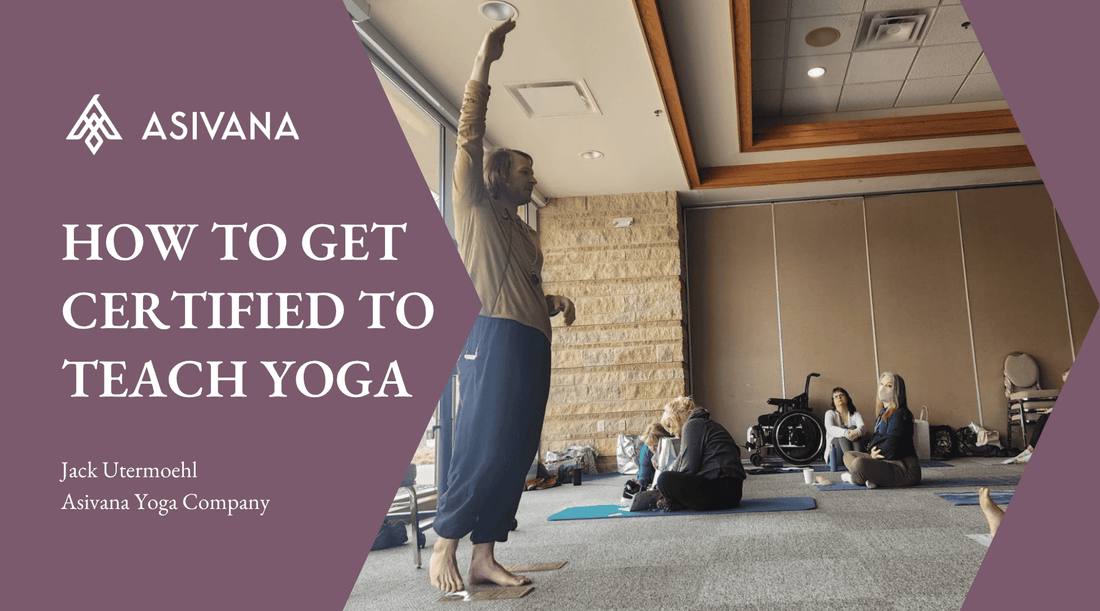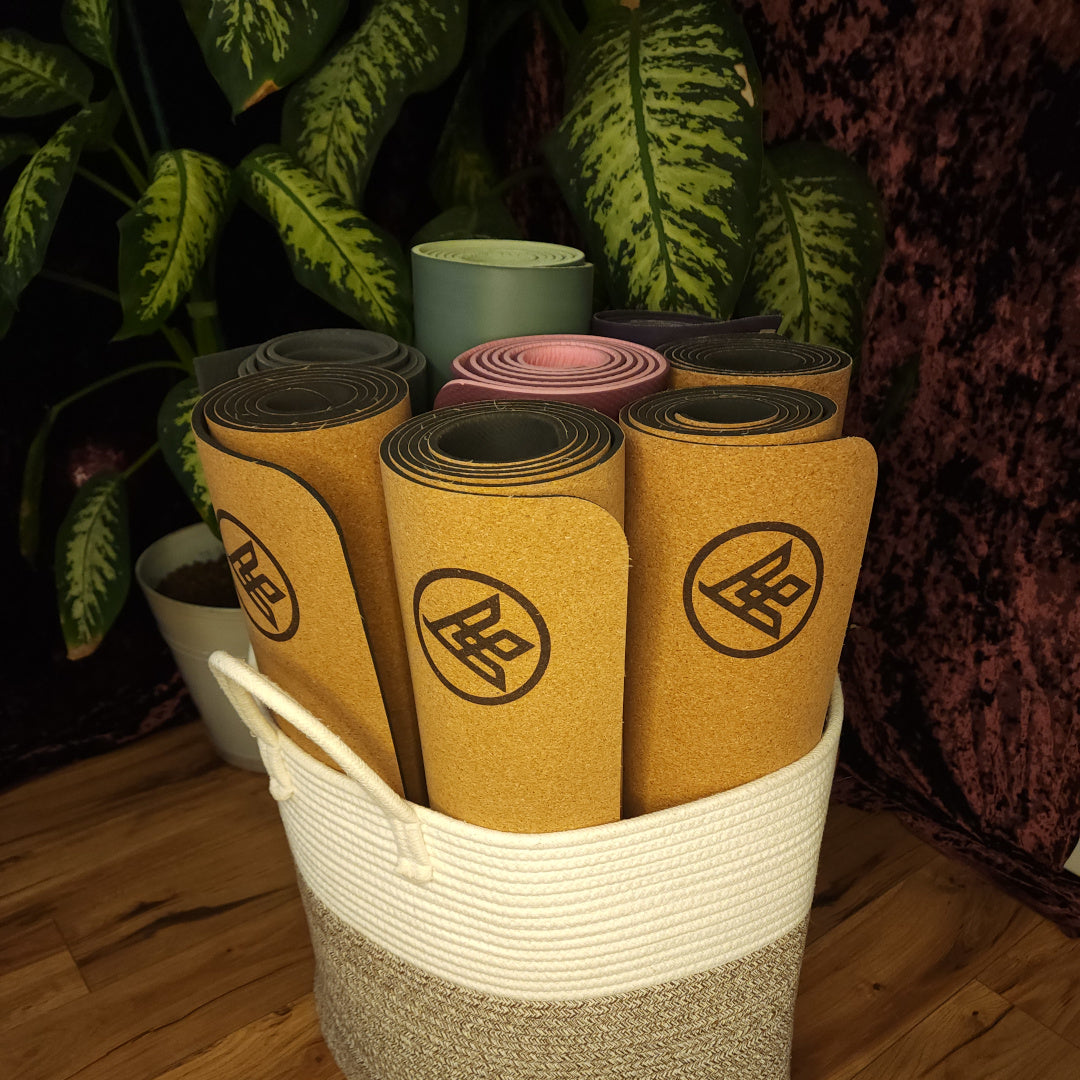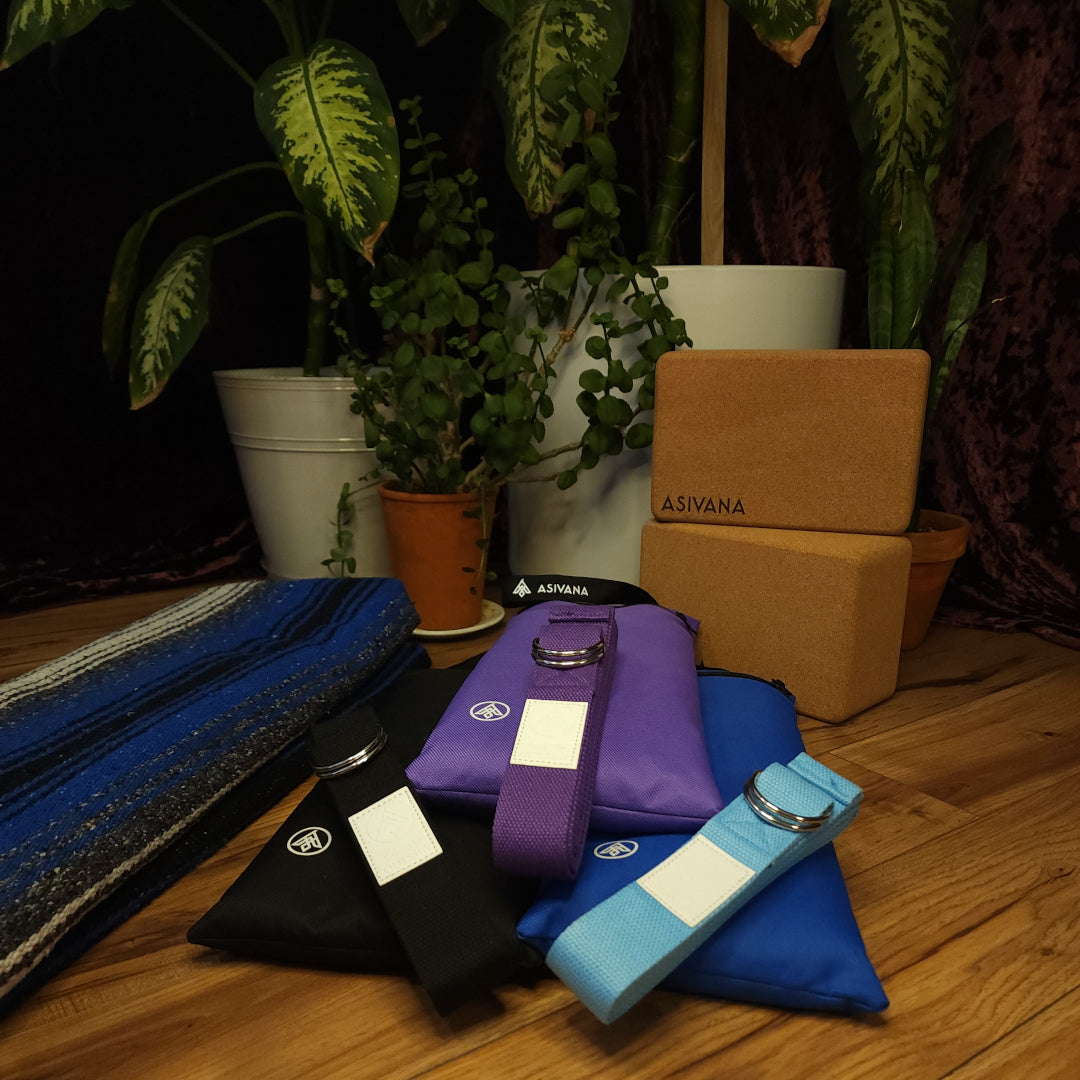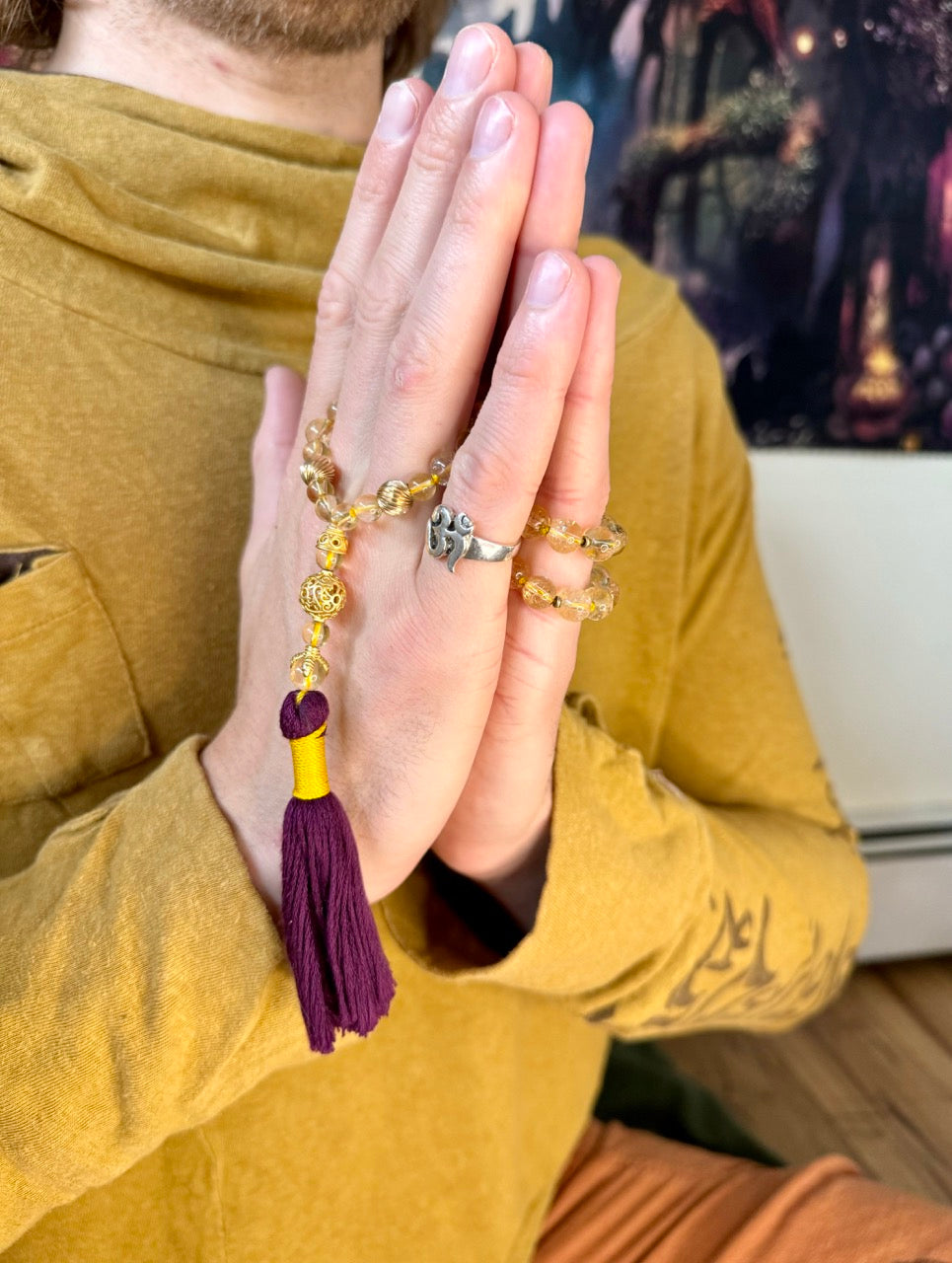
How to Get Certified to Teach Yoga
Jack UtermoehlShare
When I began practicing yoga, I didn’t plan to become a teacher. I was just trying to survive.
Years of depression, spiritual searching, and unresolved trauma had left me feeling disconnected and directionless. One day, I walked into a vinyasa class not out of confidence but out of desperation. Something shifted. The breath, the movement, the presence, it was the first time in years that I felt a breath of clarity.
That moment didn’t just mark the beginning of my yoga journey. It opened a path. Over time, that path became my life’s work.
Becoming a yoga teacher wasn’t about collecting hours or credentials. It was about svadhyaya (self-study), facing my own inner terrain and seva (service) sharing what I’ve learned in support of others. Teaching yoga is not a title. It’s a way of walking through the world.
This guide is for those who feel the call. I’ll walk you through the different types of yoga certifications, what’s required, how to choose a training that aligns with who you are, and what this journey offers far beyond the certificate.
Let’s step onto the path together.

Yoga Certifications Explained: RYT, ERYT, YACEP, and More
Not all yoga teacher certifications are created equal. Some are entry points. Others require years of teaching, practice, and continued education.
Most of the certifications you’ll come across are connected to Yoga Alliance, a widely recognized registry but it’s not the only path, nor always the right one for everyone.
Below is a breakdown of the main types.
RYT 200 (Registered Yoga Teacher – 200-Hour)
-
This is the baseline certification for becoming a yoga teacher.
-
It requires completing a 200-hour Yoga Teacher Training (YTT) from a school registered with Yoga Alliance.
- Upon completion, you’re eligible to register as an RYT 200, which is often expected by studios, gyms, and fitness centers.
- Most programs include asana (physical postures), anatomy, philosophy, ethics, teaching methodology, and a practicum component.
Who it’s for
Anyone ready to deepen their personal practice, gain teaching skills, or begin the path of yoga service. You don’t need to be advanced, just committed.
RYT 500 (Advanced Registered Yoga Teacher – 500-Hour)
-
This is the next step in formal training. You’ll complete an additional 300-hour program after your 200-hour YTT, or do a combined 500-hour training.
-
These programs go deeper into subtle anatomy, philosophy, sequencing, cueing, injury prevention, and specialized types of yoga.
-
Some programs also address the business and ethics of yoga more thoroughly.
Who it’s for
Teachers seeking depth, specialization, or a stronger foundation for therapeutic work, one-on-one teaching, or retreat leadership.
E-RYT (Experienced Registered Yoga Teacher)
-
This credential recognizes actual teaching experience after completing a training.
-
Requirements include:
-
E-RYT 200: 1,000+ hours of teaching over at least 2 years.
-
E-RYT 500: 2,000+ hours of teaching over at least 4 years.
-
E-RYT 200: 1,000+ hours of teaching over at least 2 years.
- E-RYTs can lead teacher trainings, mentor newer teachers, and often guide community workshops or intensives.
Who it’s for
Yoga teachers who’ve been in the field for years and want to step into leadership roles or guide others on their teaching path.
YACEP (Yoga Alliance Continuing Education Provider)
-
This allows you to offer continuing education credits to other yoga teachers.
-
Workshops, immersions, and specialty training (like Ayurveda, trauma-informed yoga, Sanskrit, or philosophy) can all count.
-
Yoga Alliance requires teachers to complete 30 CE hours every 3 years, so YACEP-approved offerings are in high demand.
Who it’s for
Experienced teachers ready to share niche knowledge or create offerings that go beyond weekly classes.
Yoga Therapy (IAYT – International Association of Yoga Therapists)
-
IAYT-certified yoga therapists complete a minimum of 800+ hours of specialized training beyond a 200-hour YTT.
-
Focuses on clinical applications of yoga for physical, emotional, and mental health conditions.
-
Curriculum includes anatomy, psychology, pathology, trauma sensitivity, and therapeutic adaptations.
- IAYT certification is widely respected in medical and integrative health circles.
Who it’s for
Yoga teachers called to support healing in clinical, private, or rehabilitative settings—or who want to work alongside mental health professionals, doctors, or physiotherapists.
Kundalini Yoga (KRI / 3HO)
-
Certification is offered through the Kundalini Research Institute (KRI) and taught within the Aquarian Teacher Training structure developed by Yogi Bhajan’s tradition.
- Emphasizes kriya (purification), mantra, pranayama, meditation, and energetic awareness, often framed within Sikh-based spiritual teachings.
Who it’s for
Those called to the energetic and devotional path, who seek transformation through breath, chanting, and inner discipline.
Ashtanga Yoga (KPJAYI / SYC Mysore)
-
Certification doesn’t come from completing a training, it comes from ongoing, in-person study in Mysore under the Sharath Yoga Centre (formerly KPJAYI).
-
Students earn authorization or certification only after repeated trips and long-term dedication.
- The process honors tradition, not timelines.
Who it’s for
Practitioners committed to devotional repetition, daily practice, and surrender to a lineage rather than formal credentials.
Certification Body / Path |
Training Hours |
Credential Earned |
Recognized By |
Who It’s For |
|
Yoga Alliance (RYT 200) |
200 hrs |
RYT 200 |
Most yoga studios & gyms |
New teachers entering group class instruction |
|
Yoga Alliance (RYT 500) |
200 + 300 hrs (or 500 combined) |
RYT 500 |
Advanced roles, private clients, retreats |
Teachers deepening their training and specialty focus |
|
Yoga Alliance (E-RYT) |
1,000–2,000 hrs teaching post-training |
E-RYT 200 or E-RYT 500 |
YTT leadership, mentorship roles |
Experienced teachers ready to train others |
|
Yoga Alliance (YACEP) |
Must be E-RYT |
YACEP |
Continuing education provider status |
Senior teachers offering CEUs/workshops |
|
KRI / 3HO (Kundalini Yoga) |
Varies; usually 220+ hrs |
Level One Instructor (KRI Certified) |
Kundalini-specific spaces, retreats |
Those drawn to mantra, breathwork, kriya, and spiritual discipline |
|
KPJAYI / SYC (Ashtanga Yoga) |
No fixed hours; ongoing study in Mysore |
Authorization or Certification (non-paper) |
Mysore community, traditional circles |
Dedicated practitioners who follow lineage over certification |
|
IAYT (Yoga Therapy) |
800–1,000 hrs post-YTT |
Certified Yoga Therapist (C-IAYT) |
Medical + wellness industry, hospitals, rehab |
Teachers wanting to apply yoga therapeutically in clinical or one-on-one settings |
What to Know
Yoga Alliance is one path. Lineage, mentorship, and therapeutic credentialing are others. There’s no single gatekeeper of yoga’s legitimacy.
Your credibility is built on three things: your presence, your practice, and your integrity.
Choose the path that resonates with your values, your capacity, and your calling—not just the one that gets you on a studio schedule.

Yoga Teacher Certification Requirements
Before you can teach, you need to train. But what does that actually involve?
When I started my teacher training, I had less than 100 hours of practice but I had fallen in love and my passion was driving me forward. My YTT took 10 months but some can take as little as 1 month to complete.
Here’s a clear breakdown of what’s required to begin your yoga certification journey. Some requirements are technical. Others are personal. You’ll need both.
1. Minimum Age (Usually 18+)
Most yoga teacher training programs require participants to be at least 18 years old. It’s less about legal age and more about life experience and emotional maturity.
2. Yoga Experience (Recommended, not always required)
While you don’t need to be a master of asana (postures), a few years of consistent practice helps. The deeper your personal relationship with yoga, the more you’ll understand what you're stepping into as a teacher.
3. Choose a 200-Hour Training Program
This is your foundational training. You’ll need to complete a 200-hour YTT, typically in one of three formats:
-
In-person intensives: immersive, often life-changing.
-
Modular or weekend-based: paced for those with jobs/families.
- Online or hybrid: more flexible, but may lack embodied depth.
Sometimes we don’t get much choice in what works for us but if you do; choose based on your lifestyle, learning style, and how you best receive teachings.
4. Attend and Complete All Training Hours
These hours cover anatomy, teaching methodology, philosophy, ethics, and practicum. Programs vary, but full attendance is essential. This isn’t college, you don’t cram and test out. You show up, stay present, and integrate.
5. Pass Teaching Practicum or Final Evaluation
Most programs require you to lead a class or teaching segment as your final assessment. You’ll typically be evaluated on cueing, presence, clarity, and your ability to hold space. You’ll receive valuable and key feedback on how to improve your teaching in these assessments.
6. Optional: Register with Yoga Alliance or Another Credentialing Body
After you complete your training, you may choose to register with Yoga Alliance (as an RYT 200). These registries are not mandatory but can provide visibility or professional opportunities in certain circles.
Some regions value the certification far more than others. When you apply to teach at a yoga studio, they will have you teach a demo class. Other places may not have the resources for a demo class assessment and will lean on certification for qualification.
Pro Tip: Readiness isn’t about how long you’ve practiced, it’s about how honestly you’re willing to show up.
Ask yourself: Can I stay present in discomfort? Can I hold space for others? Can I commit to inner work? If yes, you’re ready to begin.

How to Find the Right YTT for You
Choosing a yoga teacher training is a personal decision. It's not just about the hours or the price but also finding a program that speaks to your body, your mind, and your heart.
Here are the key elements to consider as you discern what training truly fits.
Accreditation vs. Authenticity
Ask yourself whether you need a Yoga Alliance registered training or something more rooted in spiritual lineage. Studios and gyms may prefer RYT certification, but lineage-based programs can offer deeper connection, transmission, and transformation. Both paths are valid. What matters most is alignment, not logos.
Curriculum Depth
Not all programs teach the same content. A solid YTT should cover asana, anatomy, cueing, philosophy, ethics, and practicum teaching. Look beyond the schedule—ask for the reading list, the contact hours, and how much emphasis is placed on subtle body, meditation, or self-inquiry. A program should grow your soul, not just your skillset.
Lineage or Style Alignment
Do you feel most connected to Vinyasa, Hatha, Kundalini, Ashtanga, or something else? Each tradition has its own rhythm, breath, and philosophy.
If you're unsure, ask yourself: Which style makes me feel most whole when I practice? Choose a training that teaches in the language your body already speaks.
Teacher Experience and Energy
Your lead teacher(s) will shape your experience more than the brand or syllabus. If you don’t personally know them already then:
- Learn about their background, lineage, teaching philosophy, and presence
- Read reviews
- Attend classes or workshops if possible
Above all, trust your gut. Your nervous system knows when you feel safe, seen, and supported.
Schedule and Format
Immersive trainings can be life-changing but require time and space. Modular programs offer flexibility for work and family life. Online options are accessible but may lack the embodied presence of in-person learning. Choose the format that allows you to fully commit, not just squeeze it in.
Cost and Location
Yes, cost matters. A cheap program that leaves you unprepared costs more in the long run. Weigh tuition, travel, accommodations, and hidden fees but don’t ignore the feeling of being in the right place, with the right people. That’s priceless.
YTT Fit Checklist
Decision Point |
What to Ask Yourself |
|
Accreditation |
Do I need Yoga Alliance registration or am I following a traditional lineage path? |
|
Curriculum |
Does this program include the depth I’m looking for—beyond just physical technique? |
|
Style / Lineage |
Does the teaching style match how I already practice and feel connected to yoga? |
|
Teachers |
Do I trust and respect the teachers guiding this journey? |
|
Format |
Can I realistically commit to the training schedule and show up fully? |
|
Cost / Location |
Does the program fit my budget and feel like the right container for growth? |
When you find a training that answers yes to most of these questions, you’re closer than you think. The right training doesn’t just fit your schedule, it fits your soul.

Why Get Certified To Teach Yoga?
Getting certified to teach yoga is more than checking a box. It’s a threshold, a moment where personal practice becomes shared service. While the certificate is important for professional opportunities, the real transformation happens inside.
You learn to teach but more than that, you learn to see. You begin noticing body language, emotional undercurrents, energetic shifts. You hold space for others, and in doing so, learn how to hold space for yourself. Your mat becomes more than a personal refuge. It becomes a training ground for presence, integrity, and care.
Certification opens doors: you can teach in studios, gyms, retreat centers, or online. It can become your full-time work or a side offering aligned with your greater purpose. You might travel, lead retreats, or host community gatherings. You might specialize in prenatal yoga, trauma-informed practices, or therapeutic sessions serving populations who need yoga most.
But the deepest benefit is internal. Training demands discipline, vulnerability, and courage. It helps you integrate philosophy into action, not just learn the theory. You practice what you teach, every day. You stop performing yoga and start living it.
“Before teacher training, yoga was something I did. After training, yoga became something I am. Certification didn’t give me permission to teach, it gave me clarity, language, and the responsibility to live my practice out loud.”
- Jack Utermoehl
And perhaps most unexpectedly, certification connects you to a community, people who, like you, said yes to a path of growth, service, and awakening.

7 Signs You’re Ready for Yoga Teacher Training
Not everyone who signs up for yoga teacher training wants to teach right away. And not everyone who teaches signed up knowing they would. Readiness doesn’t always look like certainty; rather it often looks like curiosity, commitment, and an inner “yes.”
Here are seven signs you might be ready.
1. You’ve practiced consistently for at least 1–2 years.
You’ve built a relationship with the practice. You know how yoga feels in your body, and you’ve seen how it impacts your energy, emotions, and perspective.
2. You feel drawn to share yoga with others.
Maybe it’s subtle. Maybe you’ve already started helping friends or answering questions. There’s a pull towards contribution.
3. You’re curious about the philosophy behind yoga.
Asana brought you in, but now you want to know more. What is yoga really? What’s the meaning behind the postures, the breath, the mantras? You’re ready to ask deeper questions.
4. You want to build more confidence and clarity.
Teacher training isn’t just about teaching others, it’s about learning to trust your voice, hold presence, and own your path with clarity.
5. You’re open to learning and feedback.
You don’t need to be “good enough.” You need to be teachable. Humility, curiosity, and willingness will carry you further than any advanced posture.
6. You value structure, but not rigid dogma.
You’re looking for guidance and tradition but not control. You want a framework that supports your growth, not a rulebook that limits your expression.
7. You feel ready to serve, not just perform.
Teaching yoga is an act of seva (service). If you feel called to offer your presence, your voice, and your truth then you’re already on the path.
Even if not all of these feel true yet, it’s okay. Training is part of the path, not the destination.
Certification Is a Beginning, Not a Badge
Becoming a yoga teacher isn’t the end of your journey, it’s the start of your sadhana (practice) in a new form. While certification can open doors, it’s your integrity, humility, and lived presence that invite others to trust you.
Yoga practitioners are not measured in credentials, hours, or external approval. Choose your own path for your own desires as a yoga teacher.
Instead of asking “Am I ready to teach?”, ask “What kind of teacher do I want to become?” Your answer will guide you far more honestly than any checklist.
If you’re ready to take that next step, we invite you to explore the yoga courses and offerings at Asivana Yoga, resources created to support you on your path, whether you're beginning or deepening your journey.
👉 Explore Courses by Asivana Yoga
Let your training begin with purpose and continue with devotion.











1 comment
Insightful and well-written! This blog beautifully explains the path towards yoga certification, making it clear, motivating, and perfect for aspiring teachers.